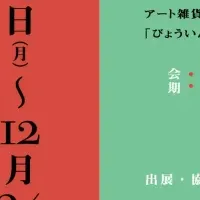
Celebrating Chinese New Year in Yulin: Tradition through Crafts and Artistry
Celebrating the Chinese New Year in Yulin: A Cultural Heritage
The vibrant celebration of Chinese New Year is a global event, recognized by over 20 countries and celebrated by a fifth of the world’s population. In 2024, the festival was officially acknowledged as an intangible cultural heritage, showcasing traditions that are rich and diverse. In Yulin City, located in Shaanxi Province, this ancient heritage comes to life through unique local crafts and festive activities.
Yulin, known for its rich history and as a significant point along the Silk Road, has long been a melting pot of various Chinese cultures. The city is renowned for its recognition of intangible cultural heritage, passed down through generations. This year, foreigners visiting Yulin experienced this first-hand by participating in various traditional crafts that are integral to Chinese culture.
Mastering the Art of Silver Jewelry
At the center for intangible cultural heritage preservation in Yulin, visitors were introduced to the exquisite craft of silver jewelry making, upheld by the Yang family for five generations. Rooted in the Ming Dynasty, the artistry involves intricate filigree techniques, blending aesthetics from both central plains and nomadic cultures.
During a hands-on workshop, participants learned to create their own silver pieces, recounting how the intricate craftsmanship allowed them to appreciate the artisans' skills behind these stunning creations. One foreign participant expressed, “Engaging with such precise craftsmanship deepens our admiration for the talents of Chinese artisans.” Their experience highlights not just the beauty of the jewelry, but the dedication of the craftsmen devoted to this art form.
Sculpture Craft - A Story in Clay
At another workshop, Master Cui demonstrated the traditional technique of clay sculpture, using yellow clay to depict vibrant scenes from northern Shaanxi. His creations are reminiscent of the Ming and Qing Dynasties, reflecting everyday life and timeless themes such as local farmers and street artists.
Participants were enchanted by the storytelling evident in the sculptures. One attendee, holding a clay figurine of an elderly man with a pipe, remarked, “The profound understanding of life embedded in these crafts really connects us to the essence of the Chinese spirit.” This connection fosters a deeper appreciation for the artistic narratives woven into each piece of art.
The Delicate Art of Paper-Cutting
The art of paper-cutting was another highlight, with Master Dong guiding participants through the delicate process of creating layered designs. This ancient craft has evolved over centuries, with each cut reflecting cultural narratives and folk tales from northern Shaanxi. Together, they crafted paper cuttings themed around the Chinese New Year, a collective effort that fostered camaraderie among participants.
Upon completion, everyone united in a wish, hoping that this art form, deeply rooted in Eastern wisdom, gains attention and appreciation worldwide. The significance of these crafts goes beyond the tangible; they provide access to the wisdom and history of Chinese civilization.
Bridging Cultures through Craft
From silver jewelry and clay sculptures to intricate paper-cutting, the artisans in Yulin are more than just skilled workers; they are storytellers of cultural heritage. As visitors from across the globe interact with these ancient arts, they find that Chinese New Year is not merely a celebration, but a vital connection to Eastern civilization. The cultural legacy that has persisted through the ages is rejuvenated as it engages in a global dialogue, showcasing the richness of human experience and creativity.
Thus, the festivities in Yulin become a vibrant tapestry of tradition, artistry, and cultural sharing, making the Chinese New Year celebration a remarkable experience for everyone involved.
Topics People & Culture)










【About Using Articles】
You can freely use the title and article content by linking to the page where the article is posted.
※ Images cannot be used.
【About Links】
Links are free to use.